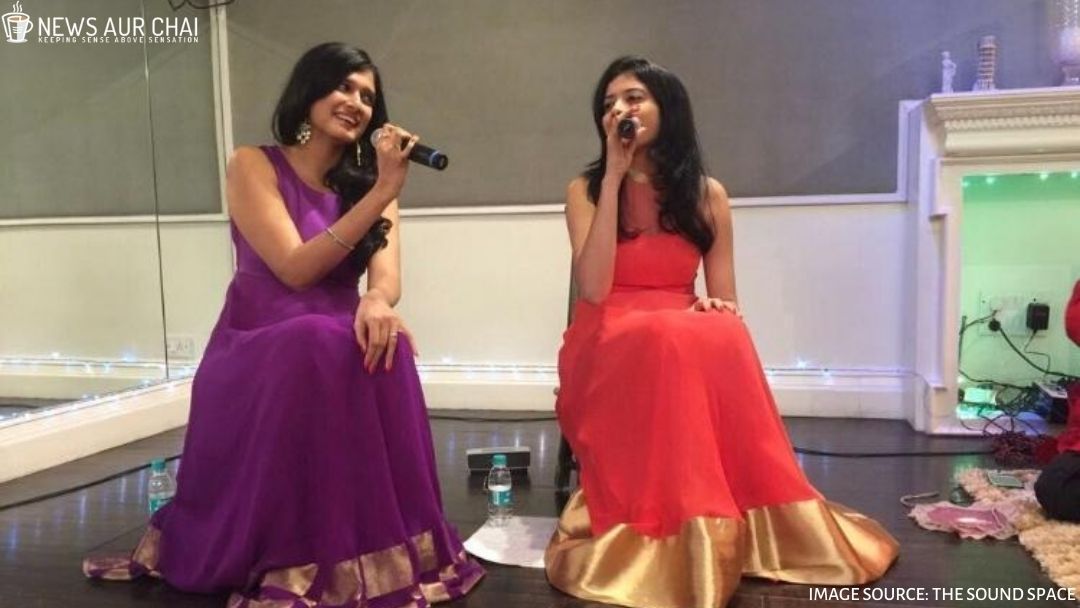The Sound Space: Healing With Music Therapy

“Bringing music into the lives of every human being – from child to adult has always been a fundamental objective for us at ‘The Sound Space.’ We genuinely believe that music is a catalyst in making life wholesome and complete. The Sound Space is our labour of love, our way to make whatever change we can – doing what we know best – music,“ says Kamakshi Khurana, Co-founder of the organization.
In conversation with Falguni Chaudhary for News Aur Chai, the sister duo – Kamakshi and Vishala Khurana share the story behind their musical venture.
Having grown up in a musical family, they have always been deeply influenced by the power of music in one’s life and have always wanted to make it available to as many people as possible. Coming from a psychology background, the founders were able to understand the potential of music as a psychotherapeutic tool or in providing relief to psychosomatic symptoms in patients.
So, what is music therapy? It is a process in which music is used within a therapeutic relationship to address physical, emotional, cognitive, and social needs of individuals. Music therapy also provides avenues for communication that can be helpful to those who find it difficult to express themselves in words.
“As we gradually paved our careers in music by teaching Indian music in a deconstructed form to children and adults, it became apparent that the benefits of the centuries-old Indian music needed to be made more amenable and accessible to people in a fun, contemporary way. This experience led to creating specialized sessions for children and adults from all walks of life with varying objectives – focusing energy, de-stressing, healing, recovering, post-trauma rehabilitation, and even simply learning music, achieving inner balance, and so on. This went on to become the inspiration behind The Sound Space,” says Vishala.
She further adds, “Our approach pulls on various aspects of Sound and Music Therapy – our curriculum is inspired by the Raga-Chikitsa which is based around the idea that every raga has an effect on the body and mind. We also use the study of the chakras or energy centres and their specific bija mantras or seed sounds. We also believe strongly in the healing powers of the human voice.”
The organization has been working with children from underprivileged backgrounds for more than five years. The Founders often collaborate with other organizations in the education niche to build a stronger community; St. Jude Childcare Centre, Akanksha Foundation, Jai Vakeel Foundation, Seva Sadan Society, Byramjee Jeejeebhoy Homes to name a few.
For almost a decade, The Sound Space has worked with approximately 10,000 students, teachers, and care-givers from various schools, care- centres, and NGOs across India.
The organization has a profit-making corporate wing wherein they collaborate with a gamut of schools, institutions, and corporations to train employees or engage in therapy sessions. This forms the basis of the pro-bono work done with the underserved community.
A personalized curriculum is designed for all participants based on the outcome they want to achieve post the workshops. These workshops can be both online or offline, Kamakshi shares a few during our conversation, “Kahaniyaan: a story-telling and music workshop, On A Lighter Note: A music where we delved into raga based film songs, and a parent-toddler workshop for some bonding time. We are currently working along with our students on a fundraiser – ‘Bulandiyan’ to help rain funds for our projects in the various NGOs.”
When talking about future plans, the Sister-duo share their kaleidoscopic vision, saying “The ultimate aim of The Sound Space‘s endeavours is that every individual in this country has access to music as part of their lives in a meaningful and structured way. This means getting into the veins of the education system – government and non-government organizations. Bulandiyaan is a starting point – a window into the work that we have already been doing. It is our aspiration that it will open up the possibilities of larger numbers and a wider reach.”






One Comment